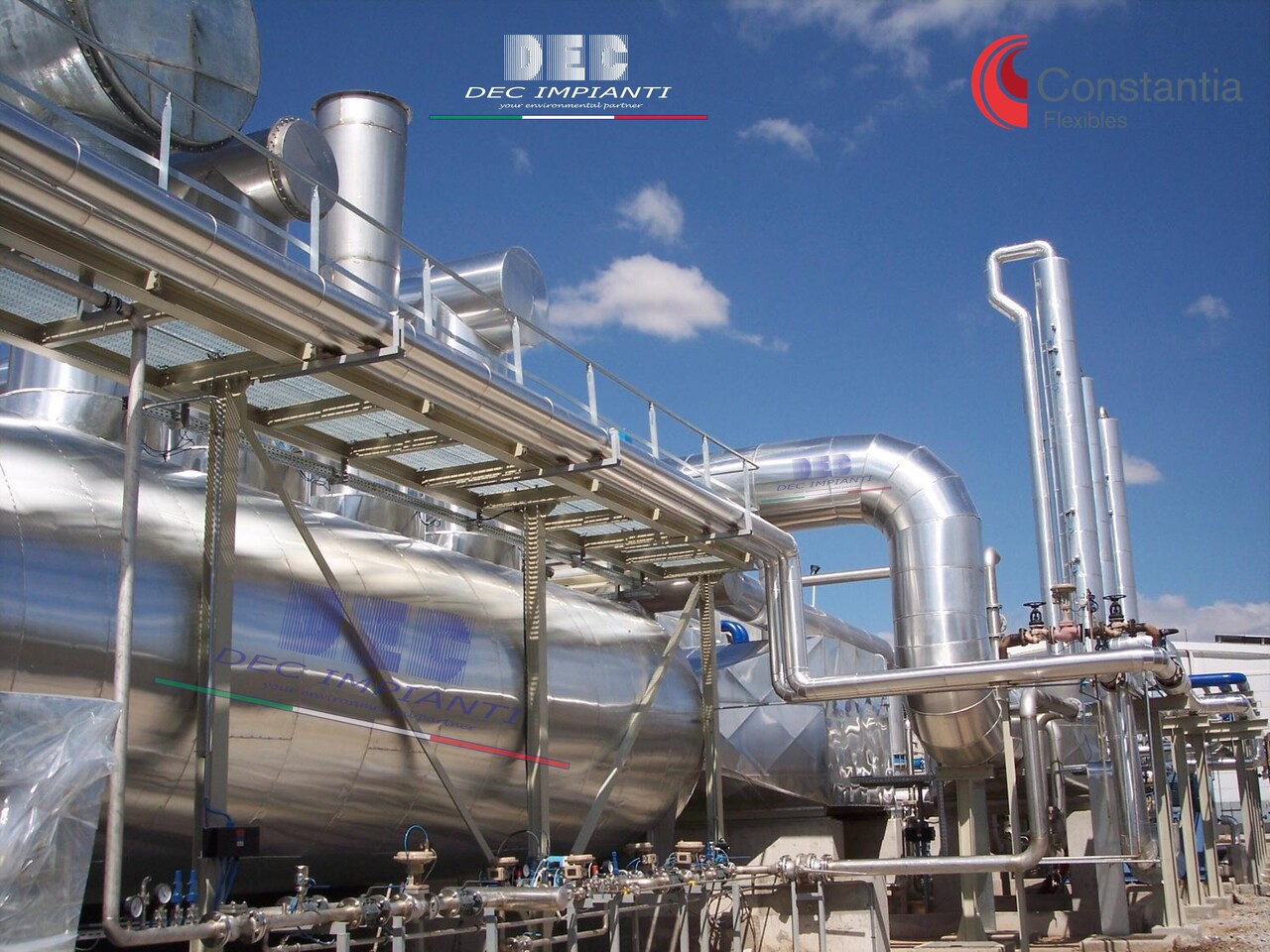
DEC.RSG™
DEC.SRU™ | nitrogen regeneration (TSA) • SRU | SRS | SRP
DEC is offering several decades of experience in design and installation of the most technically advanced and efficient vapor phase solvent recovery systems.
DEC developed its own innovative and exclusive technology in the 1980s: DEC.RSG™ (including its variation DEC.RSX™) has been proven in hundreds of industrial applications, including those involving monosolvent and multisolvent systems (including ketones), treating variable volumes of gaseous effluent (SLA 5.000 ÷ 1.000.000 Nm³⁄h), which utilizes an inert gas (nitrogen, N2) for the regeneration of the adsorption media (activated carbon), with direct recovery of anhydrous solvents, without any process water discharge.
For different process conditions and/or type of solvents or lower SLA flowrates (<5.000 Nm³⁄h), please check the direct condensation process (DEC.RSC™) or the vacuum regeneration process (DEC.RTV™).
 |
 |
Being an evolution of the solvent recovery plant using the DEC.RSV™ process (activated carbon adsorption system, with steam regeneration), the plant presents some common steps.
The solvent recovery unit is composed by two or more activated carbon adsorbers which alternate the adsorption and regeneration phase. The Solvent Laden Air (SLA), once treated (filtered and conditioned), passes through the activated carbon bed of the adsorber that is in the adsorption phase: the carbon adsorbs the solvent and the air deriving from this process is cleansed. In the next phase a hot inert gas (nitrogen, N2) flow, in a closed loop circulation, gives heat to the activated carbon bed, desorbing the solvent.
In particular this system, thanks to our exclusive gas-phase pre-dehydration process (DEC.PHD™), offers the advantage to recover directly a mixture of solvents with an extremely low water content [without the absolute need to install a second stage dehydration system (DEC.ADM™) or a complex distillation system]. We shall consider that water comes from the partial adsorption of (ambient air) humidity in the flow to be treated. Systems for correction of relative humidity (DEC.RHC™) could be implemented for specific environmental or process conditions.

This process also represents the solution for the recovery of problematic solvents, which usually are considered "NOT RECOVERABLE" or "DANGEROUS": typical application is the recovery of ketones (such as MEK - methylethylketone): check for our DEC.FPS™ process control modules.
For further reduction of water content, DEC has developed and applied several dehydration processes, before condensation (in gaseous phase) or after condensation (in gaseous or liquid phase). The biggest advantages of our dehydration systems (DEC.ADM™) is to recover anhydrous solvents, while optimizing the energy consumptions: direct condensation of a dehydrated solvent mix (without the need to condense / freeze important quantities of water) give energetic advantages and eliminates the problem to obtain a water phase (contaminated by solvents) to be treated (vaporized or sent to cooling tower) before discharge.
DEC Solvent Recovery Units (SRUs) are available in both skid modular layout (DEC.SMS™ • Smart Modular Systems, pre-built and pre-tested at our workshops) or in full customizable version (DEC.CBS™ • Custom Built Systems, with on-site erection).
If you are looking for a reliable and efficient solvent recovery unit, DEC.SRUs™ (Solvent Recovery Units) are the right and best option: DEC.SRUs™ are the most advanced and reliable Solvent Recovery Units on the market, with processes, configurations and options to meet the needs of different applications, present and future challenges. Feel free to contact DEC: we can help you assess your needs and recommend the best SRU for your operation.

